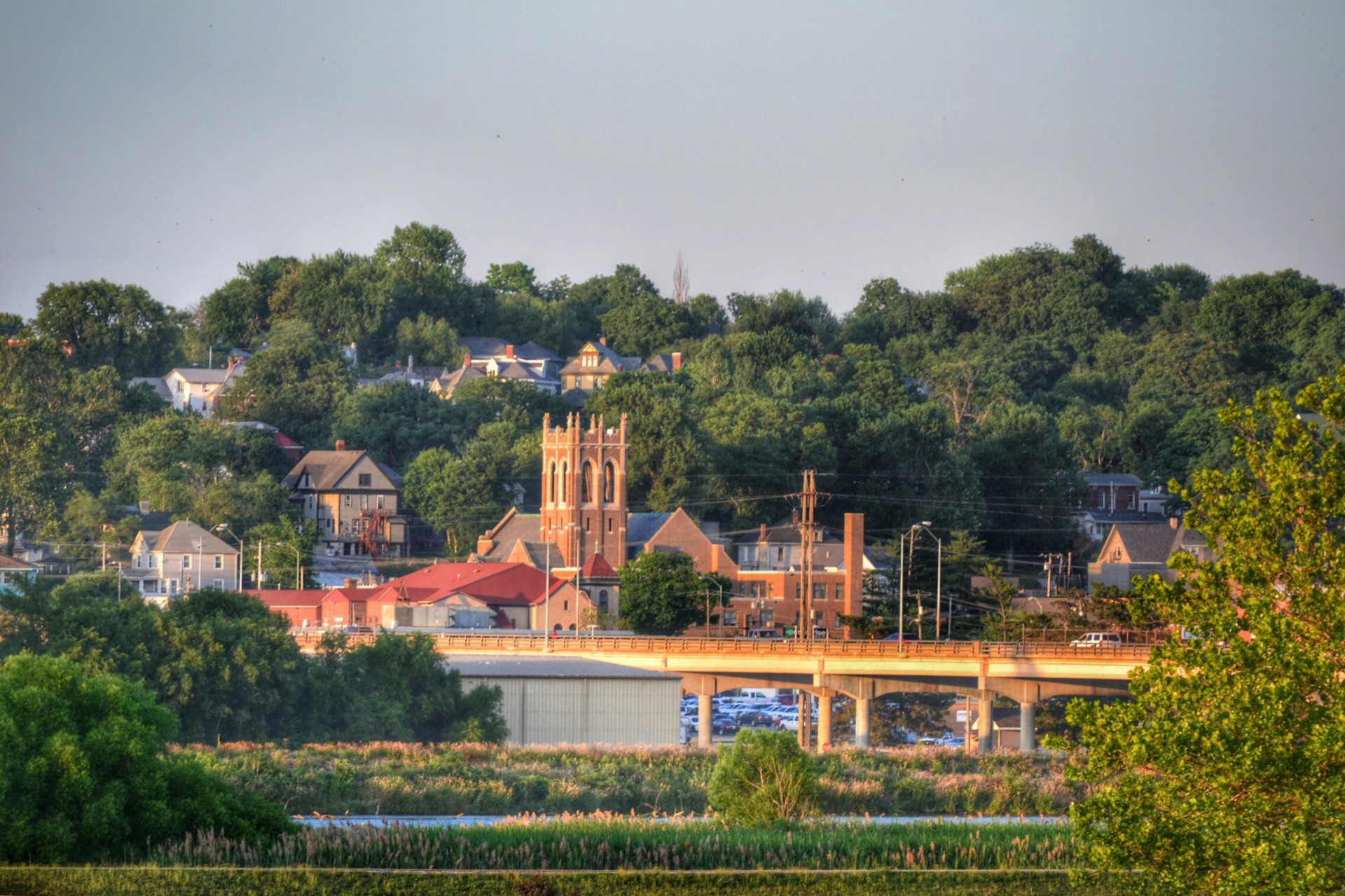
When you visit the neighborhoods of Ottumwa, you’ll find places of worship at their core. More than 60 churches, assemblies and ministries feed the spiritual needs of our community.
There has been a faith-based focus in Ottumwa since its establishment in the 1840s. As the decades and centuries have passed, that tradition can still be seen in the design and architecture of our historic districts.
Here is just a snapshot of the first five churches established in Ottumwa. Most are within walking distance of the city’s historic downtown.
St. Mary of the Visitation Parish – 216 N. Court St.:
St. Mary of the Visitation Parish was established in 1849, the first of three parishes established in the 1800s. In the 1920s, the growing congregation made a new, larger building necessary, and the current church was constructed. It was designed in the Late Gothic Revival style, which was popular at the time. The exterior is constructed of blocks of Bedford limestone.
The main entrance of the church is deeply recessed within a Gothic arched opening. On either side of the front doors is a carved fleur-de-lis, a symbol of purity that is used to represent the Blessed Virgin Mary under whose patronage the church is dedicated.
The interior reveals a traditional Latin Cross floor plan. The long, narrow nave ends in the altar area. Before the altar is the transept wing that forms the cross. Two side aisles flank the main nave and are separated from the nave with Gothic arches.
First Presbyterian Church – 228 W. Fourth St.:
The First Presbyterian Church was organized in 1853, when Ottumwa was a frontier town with a population of about 600. A group of women successfully petitioned the Presbytery for permission to organize a church in Ottumwa.
When the original church building was destroyed by fire, the present church was then built at Fourth and Washington streets. It was designed by William Foster of Des Moines and was considered a fine example of ecclesiastical architecture of the 1800s.
Trinity Episcopal Church – 204 E. Fifth St.:
In 1857, a group of seven people gathered to organize the parish named St. Mary's Episcopal Church. In 1865, the cornerstone of St. Mary's was laid on the corner of Market and Fourth streets. The church was consecrated in 1879 and 196 communicants were present.
By 1890, the congregation had outgrown the church building. In 1894, the name of the church was changed to Trinity. They laid the cornerstone for the new building at the corner of Market and Fifth streets. It was designed in the Gothic Revival style, composed of rusticated limestone and featuring Gothic arch windows and doors throughout. Because the church is built into the side of a hill, both the upper and lower levels of the building open onto the ground level.
First Lutheran Church – 126 N. Jefferson St.:
In 1871, 33 Swedish immigrants organized The Swedish Evangelical Lutheran Church in Ottumwa and became part of the Augustana Synod. This site at the corner of Fourth and Jefferson streets has remained the home of the congregation to this date. In those early days, services were held in Swedish until the immigrants learned and adopted the English language along with American customs and practices.
The first church building was destroyed by fire in 1884, and a second building was constructed on the same site in 1887. In 1924, the second building was replaced with the larger brick building that today includes the sanctuary, offices, nursery, choir room, bride’s room, library lounge and labyrinth room, which was originally the fellowship hall.
St. Patrick Catholic Church – 222 N. Ward St.:
In 1879, St. Patrick Parish was organized in Ottumwa. On Ascension Day, May 23, 1882, the cornerstone of the first St. Patrick Church building was laid. On April 15, 1883, it was dedicated as the first church built in south Ottumwa.
In November 1951, plans for a new church building were initiated. The Most Reverend Ralph L. Hayes, Bishop of Davenport, dedicated the present building in 1957. Pope John XXIII convened the Second Vatican Council in 1962. In 1963, under Pope Paul VI, this council produced the first of several new documents which guided the Church to new understandings of the sacred liturgy. In 1994, St. Patrick's Church underwent a renovation process to conform more closely to these liturgical developments.
Ottumwa IA 52501